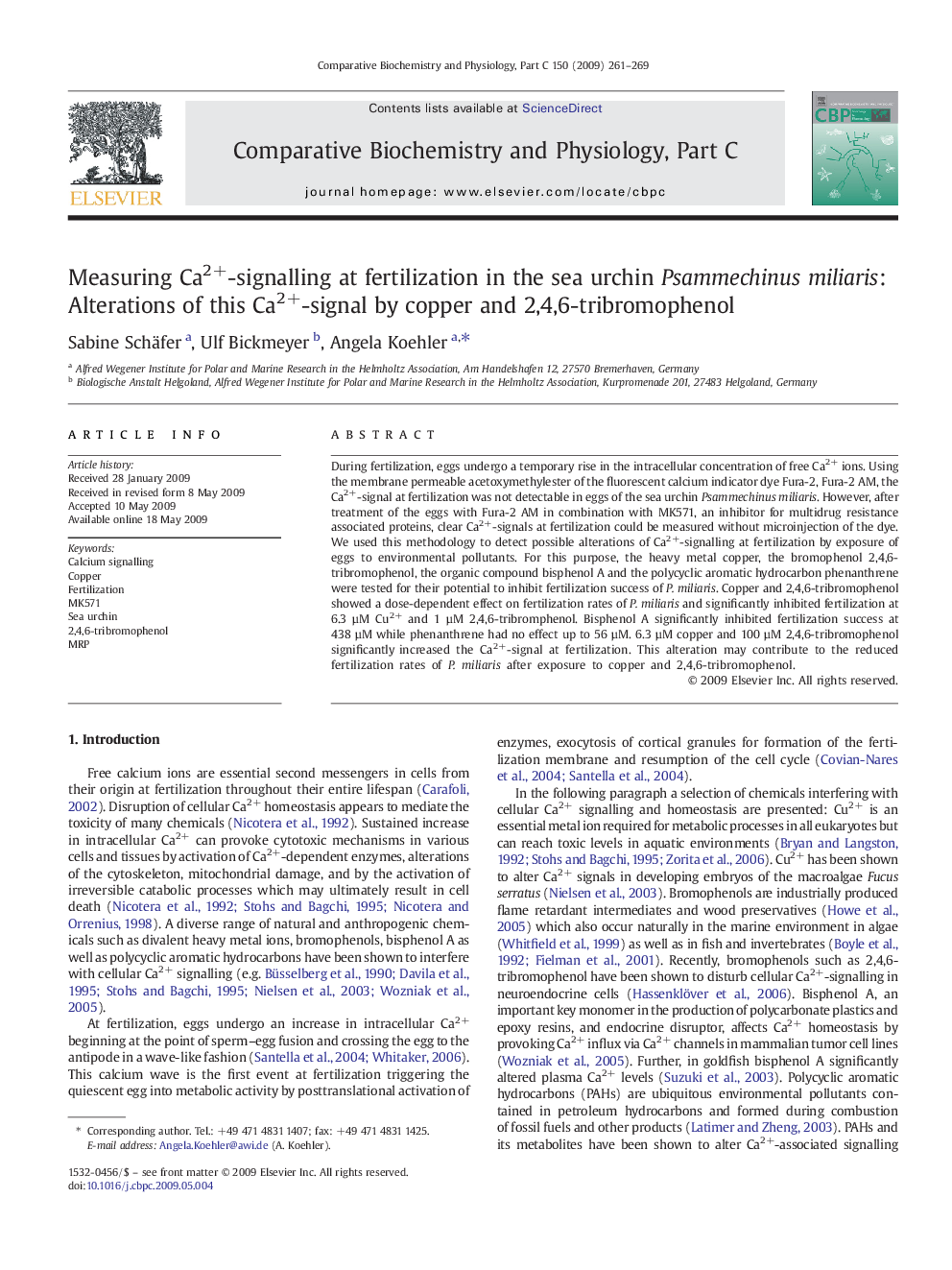| Article ID | Journal | Published Year | Pages | File Type |
|---|---|---|---|---|
| 1977889 | Comparative Biochemistry and Physiology Part C: Toxicology & Pharmacology | 2009 | 9 Pages |
During fertilization, eggs undergo a temporary rise in the intracellular concentration of free Ca2+ ions. Using the membrane permeable acetoxymethylester of the fluorescent calcium indicator dye Fura-2, Fura-2 AM, the Ca2+-signal at fertilization was not detectable in eggs of the sea urchin Psammechinus miliaris. However, after treatment of the eggs with Fura-2 AM in combination with MK571, an inhibitor for multidrug resistance associated proteins, clear Ca2+-signals at fertilization could be measured without microinjection of the dye. We used this methodology to detect possible alterations of Ca2+-signalling at fertilization by exposure of eggs to environmental pollutants. For this purpose, the heavy metal copper, the bromophenol 2,4,6-tribromophenol, the organic compound bisphenol A and the polycyclic aromatic hydrocarbon phenanthrene were tested for their potential to inhibit fertilization success of P. miliaris. Copper and 2,4,6-tribromophenol showed a dose-dependent effect on fertilization rates of P. miliaris and significantly inhibited fertilization at 6.3 µM Cu2+ and 1 µM 2,4,6-tribromphenol. Bisphenol A significantly inhibited fertilization success at 438 µM while phenanthrene had no effect up to 56 µM. 6.3 µM copper and 100 µM 2,4,6-tribromophenol significantly increased the Ca2+-signal at fertilization. This alteration may contribute to the reduced fertilization rates of P. miliaris after exposure to copper and 2,4,6-tribromophenol.
